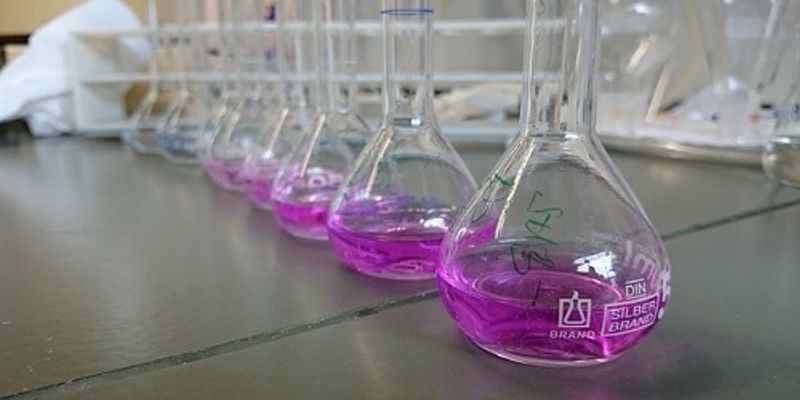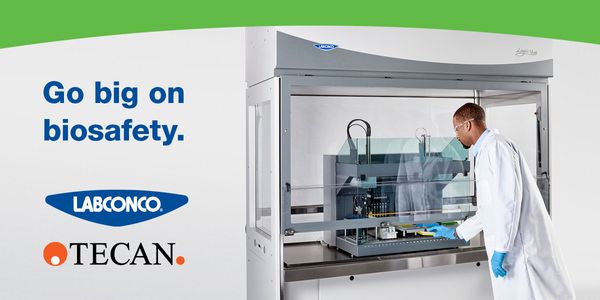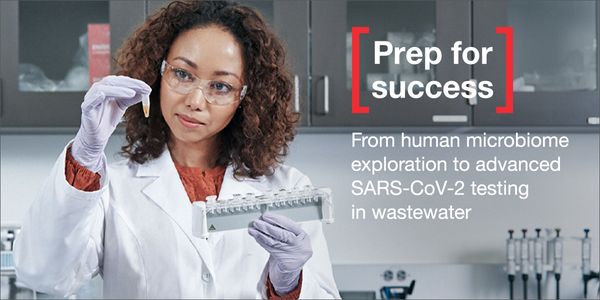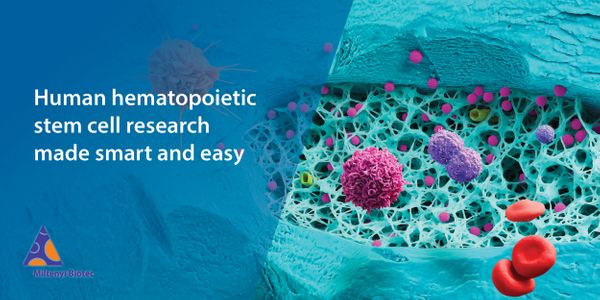Reagents
Reagents: A reagent is a substance or compound added to a system to cause a chemical reaction, or added to test if a reaction occurs. The terms reactant and reagent are often used interchangeably—however, a reactant is more specifically a substance consumed in the course of a chemical reaction.
-
FEB 24, 2021 | 10:00 AMDATE: February 24, 2021 TIME: 10am PST Automated lab instruments such as liquid handlers and cell sorters are increasingly common in all types of laboratories, driving fast results for labor...Every lab knows that starting a new quality control or reagent lot is a critical point in the labs workflow and each of these changes has the potential to adversely affect patient results an...Speaker: John Yundt-Pacheco, MSCS , Nico Vandepoele, BScPresented at: A Bio-Rad Quality Control Virtual Conference
This webinar will highlight the importance of top-quality starting materials required for consistent, reproducible drug discovery assays. Topics include blood products, the latest in magneti...
Speaker:
Josh Mahlios, PhD
FEB 11, 2021 | 10:00 AM
Date: February 11, 2021 Time: 10:00am (PST), 1:00pm (EST) Nanobodies are single-domain antibodies derived from heavy-chain-only antibodies (HcAbs) commonly found in camelids, consisting sole...
FEB 10, 2021 | 8:00 AM
Date: February 10, 2021 Time: 8:00am (PST), 11:00am (EST) Uncovering the interactions between the immune system and cancer cells or pathogens is key for understanding and controlling both ca...
JAN 21, 2021 | 8:00 AM
Date: January 21, 2021 Time: 8:00am (PST), 11:00am (EST) Today, critical reagent characterization is a key component in the overall workflow to establish robust ligand binding assays (e.g.,...
DEC 15, 2020 | 10:00 AM
DATE: December 15, 2020 TIME: 10:00am PST Scientists from Thermo Fisher Scientific will walk us through the world of microorganisms. They will discuss their most recent research on viruses,...
Speaker:
Sasha Vlassov, PhD
, Jasti Madhu
, Emily Zeringer
Sponsored By: Thermo Fisher Scientific
DEC 09, 2020 | 9:00 AM
DATE: December 09, 2020 TIME: 09:00am PST Hematopoietic stem cells (HSCs) ensure homeostasis of blood throughout life. In this webinar, we share insights into the smart and easy isolation, c...
To execute COVID-19 testing strategies effectively, labs need to procure reliable components of the workflow without interruption – from reagents to equipment and consumables at the sc...
Antibody tests are important tools to assess the efficacy of vaccine candidates and to derive suitable vaccination modalities. High specificity and sensitivity are of great importance for th...
DEC 02, 2020 | 8:00 AM
DATE: December 2nd, 2020 TIME: 08:00am PDT, 11:00pm EDT Bioreactors and shakers are used to cultivate microorganisms, plant, insect, and mammalian cells in different volumes. Upscaling of pr...
Three-dimensional (3D) cell culture spheroids and aggregates are preferred over monolayer cell culture due to their architectural and functional similarity to solid tumors. To study expressi...
Three-dimensional (3D) cell culture spheroids and aggregates are preferred over monolayer cell culture due to their architectural and functional similarity to solid tumors. To study expressi...
Immunohistochemistry (IHC) is used to determine spatial relationships where we can identify the localization of target proteins in specific regions and cells of a tissue. IHC has been the go...
NOV 05, 2020 | 7:00 AM
DATE: Date needed, 2020 TIME: Time needed Exosomes are a population of naturally occurring mobile, membrane-limited, 30 – 100 nm in diameter, extracellular vesicles containing a large...
Speaker:
Jorge Escobar
, Aurélie Tacheny
OCT 27, 2020 | 8:00 AM
DATE: October 27th, 2020 TIME: 8:00am PT Molecular diagnostic assay development and design is no simple task, and several factors affect the performance and usability of a test. Diagnostic c...
To identify genetic variants in archival human samples, researchers need a powerful NGS platform that can accommodate input DNA and RNA that is often low quality and/or low quantity. This ch...
Speaker:
Craig Mackinnon, MD, PhD
Presented at: OncomineWorld 2022: A Virtual NGS Education Meeting






















